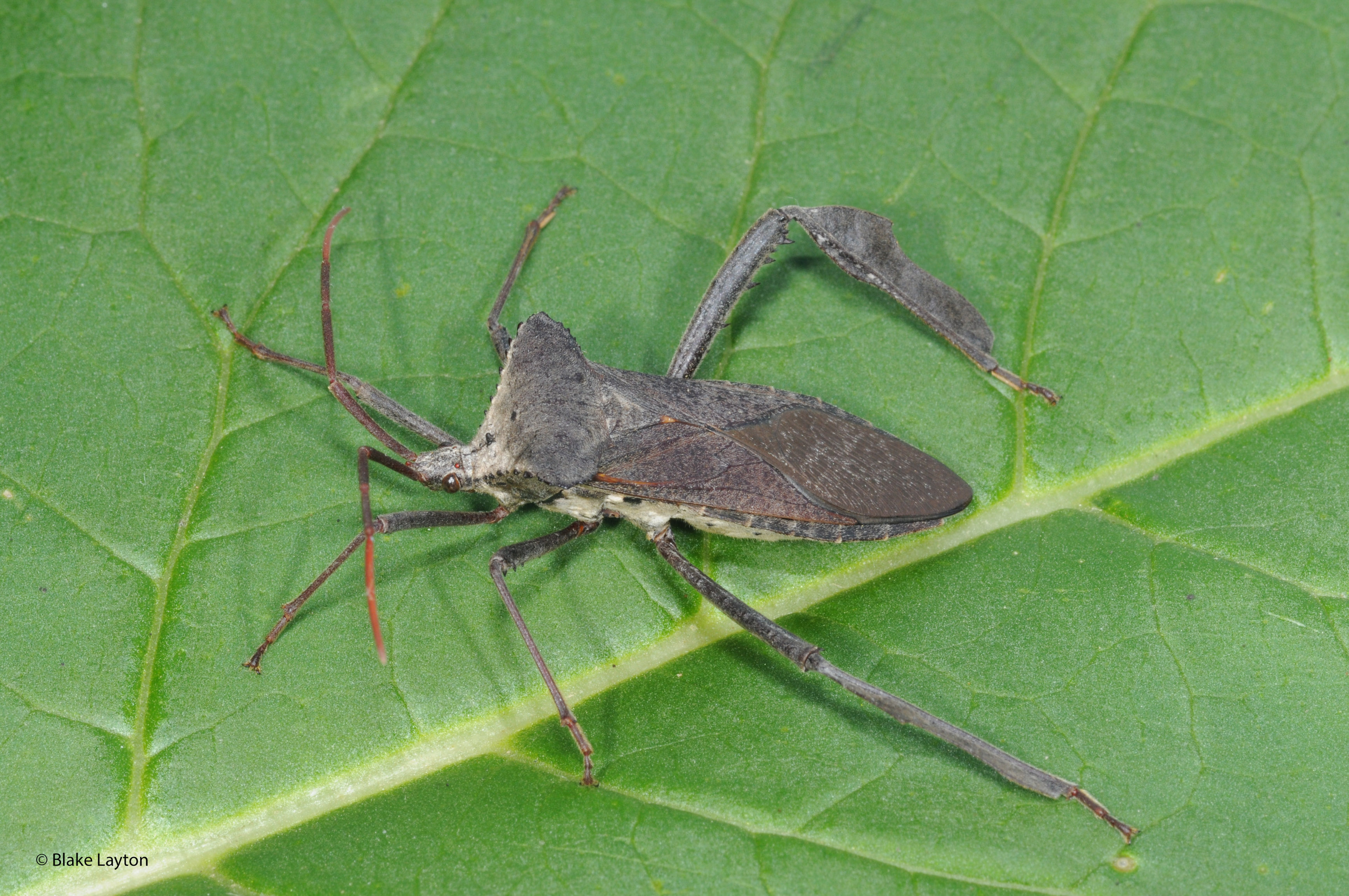Acanthocephala terminalis, Vol. 9, No. 09
Acanthocephala terminalis

Order: Hemiptera
Family: Coreidae
Home gardeners are well-familiar with squash bugs and leaffooted bugs. These two “true bugs” also belong to the family Coreidae and are by far the most frequently seen members of the family. A. terminalis is also a leaf-footed bug, but it is much larger than “the” leaf-footed bug and is not an important pest.
These big bugs have no common name because they are not important pests and are not very numerous. It is their size that causes them to even be noticed. “Wow, that’s a big bug! Wonder what it is?” The insect in the photo was over ¾ inches long, but those long legs and antenna add to the overall impression of size. Some other members of this genus are even larger, with bodies exceeding one inch.
A. femorata is a similar species that is seen with about the same frequency as A. terminalis. These bugs are easily identified by the uncommonly large, muscular looking “thighs” or femurs on their hind legs.
The biology of A. terminalis is not well studied. They feed on various trees and shrubs and are rarely seen in large numbers. Like most members of this group they overwinter as adults, and adults are sometimes seen after they emerge from overwintering or before they enter overwintering quarters in the fall.
Like all members of this family, both nymphs and adults produce a strong-smelling defensive scent from a pair of special glands on their thorax. If you handle one of these bugs the smell can persist on the hands for several hours, even after repeated washing. This is primarily a defensive odor that is repellent to vertebrate predators, as well as many insects and spiders, but it also helps communicate with other members of the species for aggregation or attracting a mate.
Leaf-footed bugs and other Coreids are all plant feeders, so they do not bite. But large species such as this one superficially resemble wheel bugs, which are our largest assassin bugs. Wheel bugs are predators of other insects and can inflict a painful bite. Wheel bug nymphs can also bite and look a lot like nymphs of the larger leaf-footed bugs.
If you spot any species of leaffooted bug this summer, look closely to see if it has any small white eggs glued to its back. If so, these are the eggs of parasitic tachinid flies, such as the feather-legged fly, Trichopoda pennipes, which also attacks squash bugs and stink bugs. The larvae that hatch from these eggs bore into the bug and devour it from the inside, taking care to eat less critical organs first so the host remains alive long enough for them to complete their larval development.
Blake Layton, Extension Entomology Specialist, Mississippi State University Extension Service.
The information given here is for educational purposes only. Always read and follow current label directions. Specific commercial products are mentioned as examples only and reference to specific products or trade names is made with the understanding that no discrimination is intended to other products that may also be suitable and appropriately labeled.
Bug’s Eye View is now on Facebook. Join the Bug's Eye View Facebook group here.

